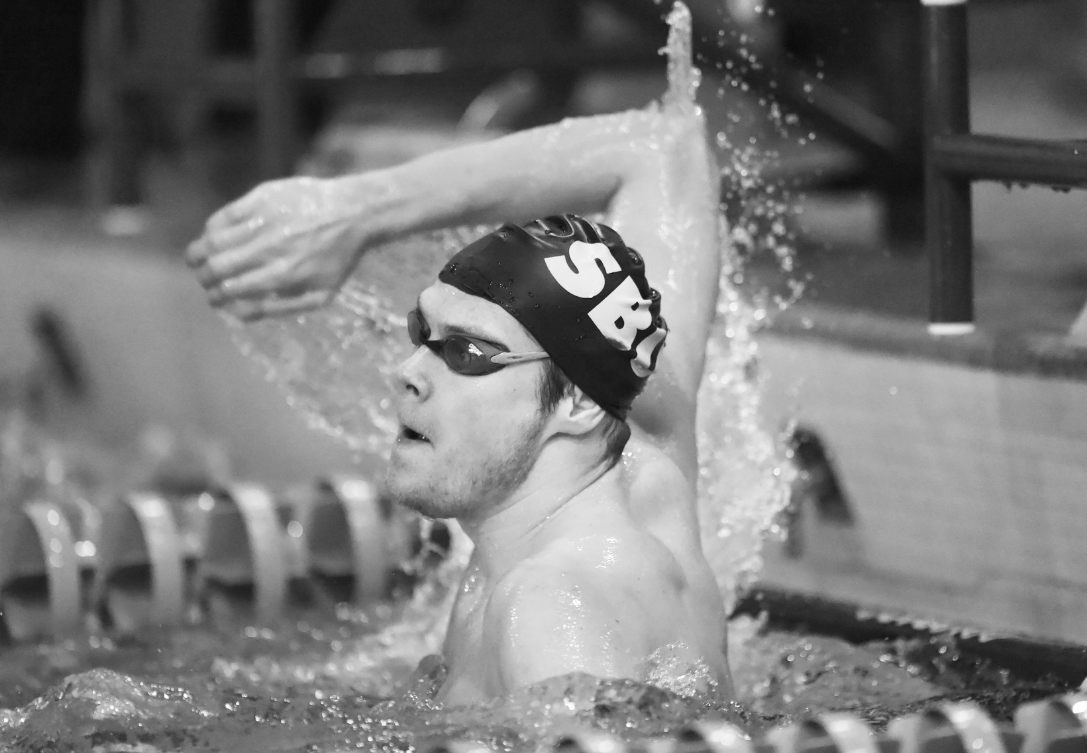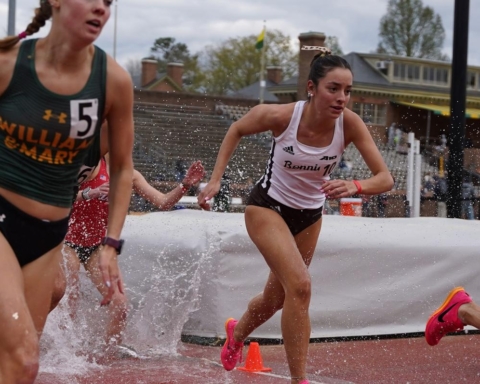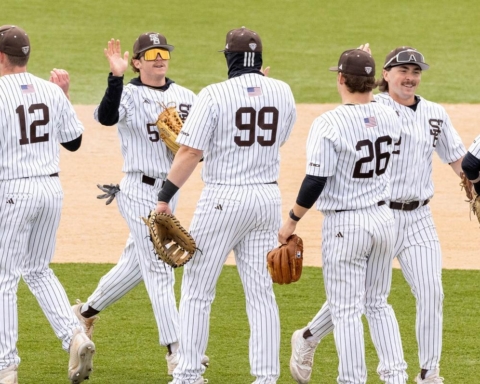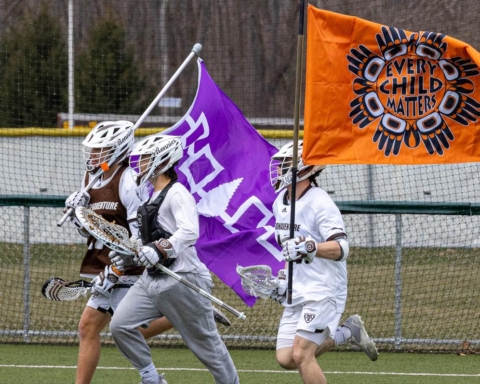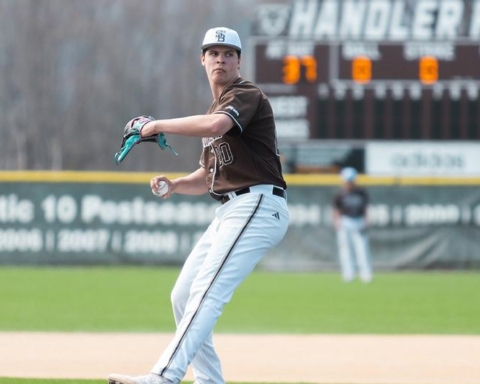By Matt Petit, Staff Writer
With the men’s swim team having its Akron Invitational meet this weekend, mid-season has arrived for the Bonnies.
The men’s swim team has had some setbacks regarding health this season. Nick Burdo a sophomore freestyler from Syracuse, New York has been one key swimmer for the Bonnies, despite having an injury throughout the 2017-18 season.
“[The] injury so far this season has definitely had an impact on the team and training,” said Burdo. “When the team isn’t functioning at 100 percent, we aren’t working at capacity, and with a team as small as we are this year, we need guys in the water filling any gaps we have every day.”
These sorts of injuries are sometimes an unfortunate consequence of the elite training regimen that most Division I athletes are well acquainted with. Head coach Sean McNamee, however, said there are ways to combat injury and work around some of them in a safe way.
“Some things like tendonitis you can train right through,” said McNamee. “Other things that are muscle strains and spasms and things like that, then aggravating it only prolongs the problem, so each one has to be looked at and evaluated individually.”
One challenge for many newly cleared swimmers is reacquaintance with training after being out for a duration of the season. A large obstacle is getting them back into cardiovascular shape, as well as regaining any lost strength.
“Once we get the scenarios where individuals are cleared back in, we work part and parcel with downstairs [sports medicine] for what kind of activities that they’re permitted to perform in the water and out of the water and holding to that and staying with the protocols,” said McNamee.
He was also quick to make a distinction that is commonly thought of as a gray area for most training sports.
“The definition between discomfort and pain sometimes needs to be defined,” said McNamee. “A person is permitted to go through discomfort but not have to endure pain. There’s no good for us to have a kid train at 75 percent.”
Burdo also gave insight into how he, personally, will hopefully be able to return to the season in shape and ready to swim.
“Extra cardio and flexibility have been added to my workouts to ensure I don’t lose any of the training,” said Burdo. “High intensity, explosive movements have had to be tabled in order for a successful recovery. Weight training has also been modified because of the injury but still remains an important part to improving in the water.”
The Bonnies, however, have been able to look past these setbacks for the time being and continue to make headway. One individual who has stood out among others is Joseph Malafronte, a sophomore butterfly and freestyler. Malafronte has been able to practice consistency thus far in the 2017-18 season, even with fatigue presenting itself as a large challenge.
“Fatigue is a necessary factor in a successful season,” said Malafronte. “We just had break, which is a nice mental hiatus, but the important thing for physical fatigue is to take care of the small things to help your body recover, such as extra stretching and rolling out.”
With all training sports, this concept of fatigue is noted to be crucial in order for a successful taper.
A tapering period is a duration of time in an endurance athlete’s training cycle that optimizes an athlete’s performance in the weeks leading up to a typically important event, such as the A10s conference meet. This is done by reducing the intensity and occasionally, the frequency of an exercise, to emphasize rest and recovery for the muscles while also keeping the cardiovascular system in peak shape.
The Bonnies have two of these periods: one before their Akron Invitational meet, and the other before A10s.
Malafronte explained necessary components for a successful taper.
“Tapering can be tricky to get just right,” said Malafronte. “The only sure thing you can do is train hard so that when taper comes around the work is done, and it is time to reap the benefits of a good season.”
McNamee echoed Malafronte’s comments on taper and how to take advantage of the recovery period in the Bonnie’s training.
“You want to put as much investment in the bank as you can for you to yield at the end of the year,” said McNamee. “During an important training segment here with the anaerobic area that we’ve moved into, I was initially pleased with some that were able to get through, but holistically it’s going to be a little complicated.”
Looking forward, however, McNamee is hopeful that the team will be able to tie up its odds and ends and show up ready to compete in future meets.
“We’re definitely improving as far as meet performance,” said McNamee.

